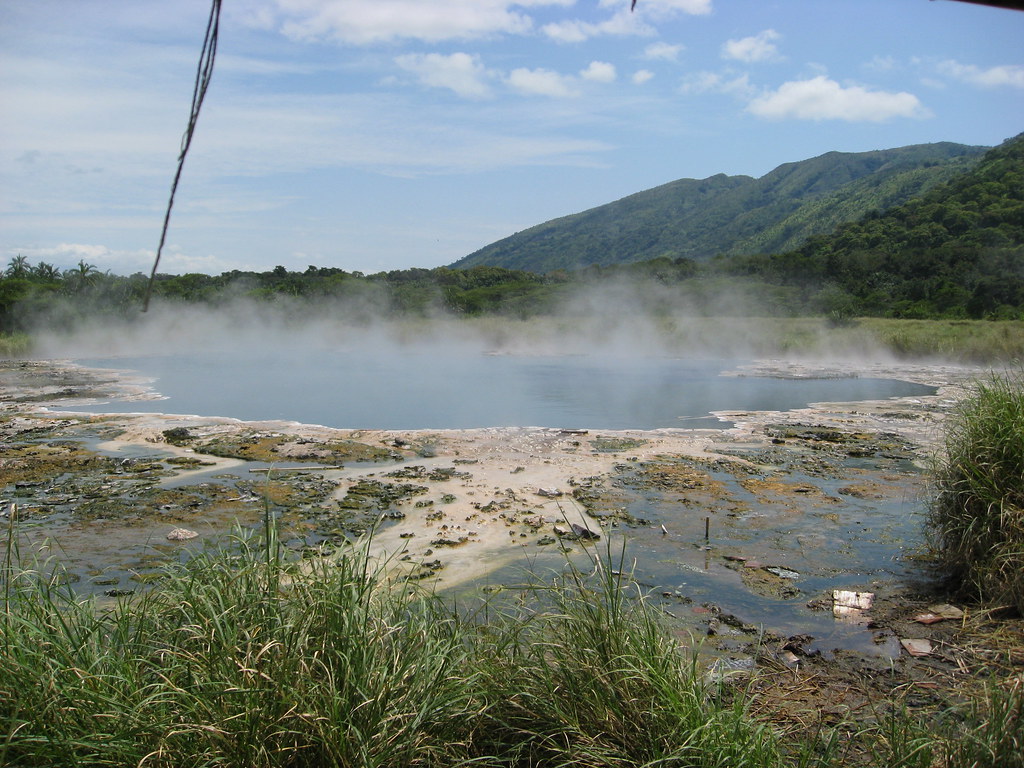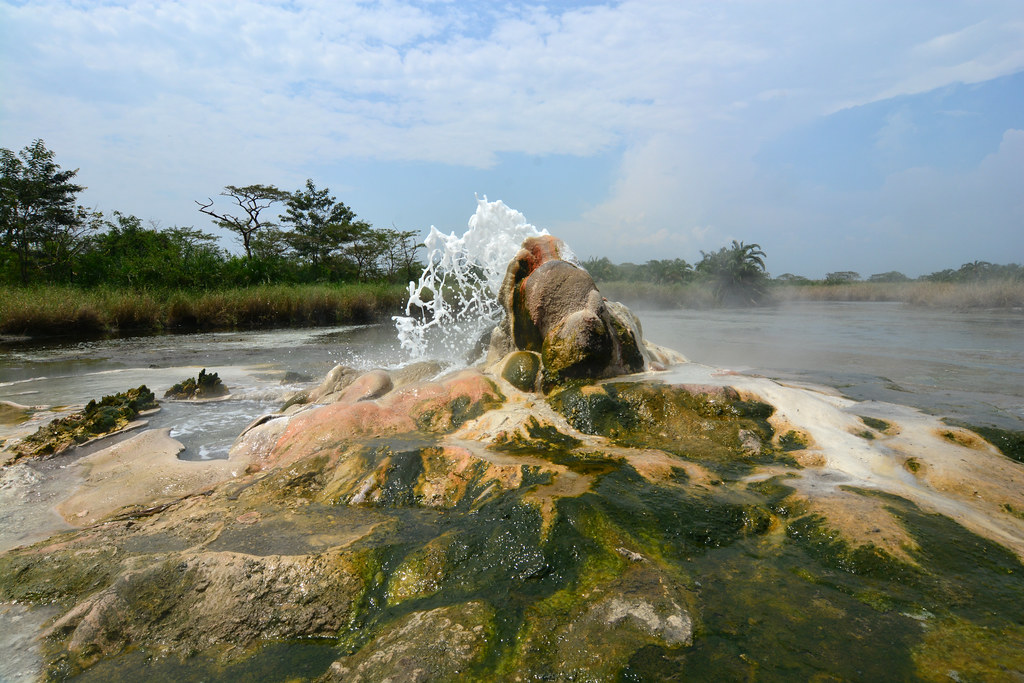
Kanangorok Thermal Spring
Kanangorok Thermal Spring
Kanangorok Hot Springs: The thrill of a safari in Uganda’s Kidepo Valley National Park extends beyond the observation of substantial herds of mammals and the sight of exquisite avian species in flight. The Kanangorok hot spring exemplifies Uganda as a tourism destination that continually offers unexpected delights. Located one and a half hours northeast of Apoka in the Kidepo Valley, the Kanangorok hot spring is situated near the international border with South Sudan.
Reaching the authentic location of the hot spring is a formidable task, although it is worthwhile despite the difficulties. The tourists traverse an underbrush filled with tall grass, prickly acacias, thickets, and shrubbery. This presents travelers with the chance to obtain genuine outdoor encounters. The Kanangorok hot spring is situated among solid rock, where subterranean water boils and leaks via vents, emerging from granite outcrops to the surface. The boiling Kanangorok hot spring attains surface temperatures over 500 degrees Celsius, with a water flow rate of 1 liter per second. For several visitors journeying to Uganda, who lack familiarity with geography and geology, the enigma of Kanangorok hot springs persists as an unresolved conundrum.
For the traveler who holds a profound belief in African heritage and indigenous people, the cultural theory seeks to provide an account of the origins of the Kanangorok hot spring. Numerous African traditions suggest that phenomena such as plagues, disasters, droughts, infertility, and untimely death occur due to the displeasure of ancestral spirits.
They present sacrifices to placate and seek forgiveness. For them, the Kanangorok hot spring was created through ritualistic practices. A prolonged drought once afflicted the Karamoja region and extended into present-day South Sudan. The customary monarch dispatched a young man, Longorok, to retrieve water in a traditional gourd from the south, likely Kidepo Valley. While returning with water in the gourd, dense rain clouds gathered, and it began to rain heavily. Longorok arrived to the precise location of the hot spring when an intensely bright lightning bolt obscured his vision. He collapsed, the water in the gourd spilled, and Longorok abruptly perished. The villagers claim that the water in the gourd, combined with the blood from Longorok’s body, instantaneously created the hot spring. “Kanangorok” is a synthesis of Longorok with the occurrence of hot spring production.
For geologists, the creation of hot springs is just a geographical phenomenon, indistinguishable from other hot spring deposits globally. The two ideas share a commonality in the elevated mineral content of the hot spring water, which indigenous tribes see as a therapeutic spa for various bodily problems.

The travelers to Kanangorok hot spring navigate several vegetation zones and gain more opportunity to explore Kidepo Valley National Park. The journey to Kanangorok hot spring crosses meadows, bush, shrub, and woodland, leading to the borassus palm forests of the Kidepo valley. There exists a significant likelihood of encountering thrilling sights unexpectedly. The vicinity of the hot spring is characterized by an unpleasant odor, with sulfur issuing from the spring. Sulphur is a substance many animal species consume to alleviate their gastrointestinal disorders. Wildlife creatures are likely to avoid human contact during the day and may seek refuge beneath the cover of darkness for self-medication. This enhances the likelihood of observing unusual wildlife species in the vicinity of Kanangorok hot spring.
For the indigenous populations, the hot spring is a hallowed site, inhabited by spirits and ancestors. Individuals from distant locations visit the Kanangorok hot spring to pay tribute, make offerings, seek blessings, and immerse themselves in the therapeutic waters for self-medication to alleviate physical illnesses. The hot spring site is bustling with enormous crowds of individuals. A local guide is consistently available to elucidate the traditional beliefs and cultural framework of the hot spring. Travelers on safari to Uganda who visit the Kanangorok hot spring in Kidepo Valley National Park undoubtedly conclude their highly successful vacation with a harmonious blend of wildlife observation, magnificent vistas, cultural exploration, natural spa experiences, and exceptional wilderness encounters.


